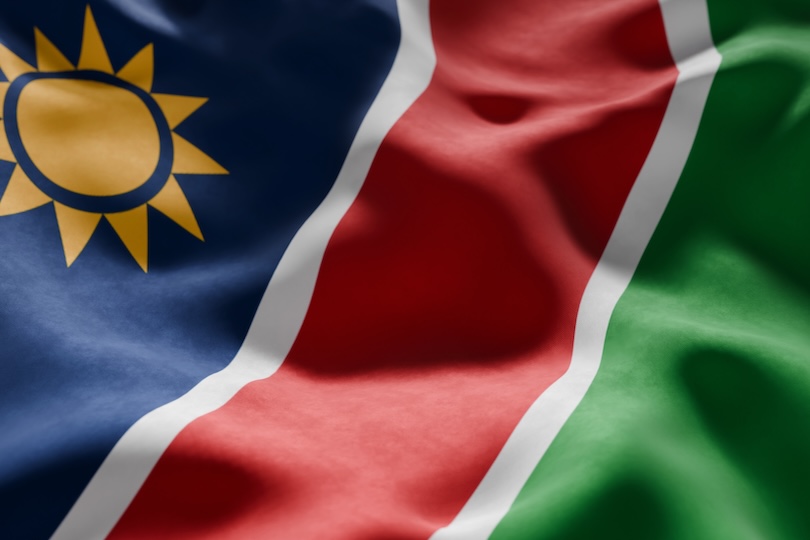
Triff / Shutterstock
Amid the recent international crises in various parts of the world, some states claim cautiously to be neutral. They do so for various reasons but mostly to evade being dragged into a potential conflict. Nevertheless, are these states really neutral? The concept of neutrality has been scrutinized by many scholars, and there are now numerous versions of neutrality to choose from. The UN definition of neutrality stresses the abstention of a state from all participation in a war between other states and the state’s attitude of impartiality. Strictly speaking, to remain impartial, a state should refrain from any contact with other non-neutral states. This is because every contact has some influence on the contacted state and this influence is virtually impossible to be the same for all non-neutral parties involved. In practice, such neutrality is therefore unlikely and states reflect this in their foreign policies. For instance, the prominent example of a neutral state, Switzerland, literally says in its Foreign Policy Strategy 2024–27 that: “Neutrality does not mean indifference.” So, is neutrality just a diplomatic term to cover certain actions? If policymakers use neutrality in different ways, it can be difficult for IR scholars to incorporate this concept into their theories. On the other hand, if the theories do not reflect the language of policymakers, policymakers will hardly listen to the theories. This miscommunication then widens the gap between IR theory and practice.
International Relations are known to be cooperative or conflictual. This means that when actors in the international system act towards one another, they either help or harm their counterparts. Yet, we can often hear that states have neutral relations with others. What does this mean? Typically, one would imagine that if a state has a neutral relationship with another state, the neutral state is neither an ally nor an enemy of the other state. That is to say, a neutral state neither helps nor harms the other state, and thus has no influence on the other state’s condition. But can this still be called “relation”? To have a relationship with someone, one must interact with their counterpart, i.e., perform an action towards this counterpart. Now, follow this argument: To act consciously, one must first form the intention to act, therefore every conscious action is a result of someone’s intention to do something. Because every action happens in time, every action implies a change from the previous state to the new one. If this change is intended to benefit the counterpart, the action is cooperative and vice versa. There can be no neutral action because it is logically impossible to change something to be more the same.
The idea that a relationship is neither cooperative nor conflictual may remind us of Erwin Schrödinger’s famous thought experiment about a cat that is neither dead nor alive. Schrödinger’s goal was to point out the absurdity of a situation that which something could be in two contradictory states at the same time. We know that this is, at least at the macro level of reality, impossible. In logic, this proposition is known as the principle of non-contradiction and, for example, Aristotle called it the firmest law thanks to which we can acquire any knowledge at all. Every relation must therefore be either cooperative or conflictual because these two kinds of relation contradict each other. No relation can be neutral since every relation requires some action that results in some change. No change implies no action, and no action implies no relation.
We have seen that, despite the diplomatic language, no neutral relation can exist. But why is this important? First, it demonstrates the dualistic nature of international politics, which is, surprisingly, not so obvious to some IR scholars. Second, it can help policymakers to make sense of IR theory. How? All IR theories essentially define certain factors that are presumed to lead to a certain form of relation. For instance, economic interdependence may, according to liberalism, produce cooperative relations. Depending on the IR school, these causal factors can be material capabilities, identity, pre-existing relations, structure, social norms, etc. Some of these factors are supposed to drive actors towards cooperation and some of them towards conflict. No factor can make actors establish relations of a different kind simply because no other kind of relation is in principle possible. Classifying the factors as cooperative and conflictual simplifies the whole field of IR theory to people who are not interested in philosophical debates but care primarily about facts. How? Instead of following a specific theory, one can simply make a list of all causal factors listed by all IR theories and divide the list into two major groups: 1) factors that promote cooperation, and 2) factors that promote conflict.
Such a summary of IR theory can be an essential tool for all policymakers because it defines all known factors that have the potential power to influence which form of International Relations will be realized. Policymakers then select only those factors that exist in their specific case and assign a certain weight to each of those factors according to how important role these factors are likely to play in the relationship. For example, if military power is assumed to have a significant influence, we should assign a high weight to it. Finally, policymakers compare the total weight of the cooperative factors with the total weight of the conflictual factors in their case. Based on the result, policymakers will know whether to expect the relation to be cooperative or conflictual, including the intensity of cooperation or conflict. Of course, this is just a brief summary of how the cooperation-conflict model of IR can help policymakers utilize the knowledge of IR theory. The details of this method are described at length elsewhere, however, even this quick overview hopefully shows how removing the term “neutral relation” from the IR discourse can help bridge the muddy waters between IR theory and practice.
Further Reading on E-International Relations
About The Author(s)
Dr. Radek Váňa is a researcher specializing in social science theory. He conducted his research at world-renowned universities, including Charles University in Prague, Vrije Universiteit Amsterdam, Institut Barcelona d’Estudis Internacionals, and received his Ph.D. in Social Science from University College Dublin, where he focused on theories of international politics. He is the author of the Drive Theory of International Relations, the first universal theory of international politics. During his academic career, Dr. Váňa recognized the importance of communicating science to the public. His book “Relationship Theory: A Scientific Method to Manage Your Relationships” reflects his commitment to bringing the latest social science findings to a general audience.
Before you download your free e-book, please consider donating to support open access publishing.
E-IR is an independent non-profit publisher run by an all volunteer team. Your donations allow us to invest in new open access titles and pay our bandwidth bills to ensure we keep our existing titles free to view. Any amount, in any currency, is appreciated. Many thanks!
Donations are voluntary and not required to download the e-book - your link to download is below.

 Movie
Movie 3 months ago
44
3 months ago
44 






![Presidents Day Weekend Car Sales [2021 Edition] Presidents Day Weekend Car Sales [2021 Edition]](https://www.findthebestcarprice.com/wp-content/uploads/Presidents-Day-Weekend-car-sales.jpg)



 English (United States)
English (United States)